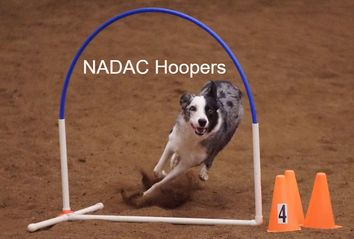In early 2022, I began teaching a new class at the club. Handlers that were moving into the agility track (Intro to Agility, Beginner Agility, etc.) from Beginner Obedience weren't working with their dogs as a team. The handlers had no idea how to train a dog. Sure, they could drag a dog in a circle around a ring indoors on lead and maybe they stuffed a few treats in its mouth now and then but they weren't really communicating with their dogs. I thought, here's a knowledge gap that I think I can fill.
When I first proposed the class, to be held on Sunday mornings inside the club, the reaction of the old guard was so extreme that you would have thought I had proposed slaughtering puppies on their own front lawns. The inside of the club was sacrosanct, to be reserved for clean obedience training (of course, based on punishment), not dirty training with treats! The club had never offered classes on the weekends! Training with clickers would disturb other people who needed to train indoors! The wailing, the gnashing of teeth, and the rending of garments was extreme.
So I spent several weeks going to the club on Sunday mornings and documenting exactly who was using it and what they were doing. It was empty, week after week.
I resubmitted my proposal and was grudgingly granted permission to teach this new class for one session, with said permission given provisionally, ready to be yanked back if there were "problems." The Four Horsemen of the Apocalypse didn't make an appearance during those 8 weeks, so I kept going.
I just finished the thirteenth 8-week session of my class. I guess weekend classes weren't such a bad idea after all because there are now Puppy Kindergarten, Beginner Obedience, and Scent Work classes offered on Saturday and Sunday in addition to mine.
The class is called Teamwork. It's all about teaching handlers how to communicate with their dogs consistently and reliably. I use positive training methods and actively discourage negative markers and punishment. I teach handlers about rate and placement of rewards, how to use a clicker, and how to train behaviors with luring, targets, and shaping. Most of the exercises are flatwork, done with no equipment. As their skills progress, I add exercises with cones, platforms, and perch bowls. After 8 weeks, if they are paying attention and working at home between classes, the handlers and their dogs can execute all sorts of things that they will actually use in agility, obedience, and rally.
What's so interesting about the class is that all of the training is for the handlers--but they don't know that at first. I mean, some dogs are a bit rambunctious and excited but what I am asking the dogs to do is pretty simple. Most dogs pick up the exercises right away.
The origin of the idea for this class goes all the way back to the teaching I was doing in Saudi. I saw then that I could make a meaningful difference by helping pet owners communicate better with their dogs. It morphed to have more of an agility focus, of course, but the essential idea is the same. Owners that are reliable and predictable in how they communicate and reward their dogs will elicit reliable and predictable behaviors from their dogs.
The course content has evolved, of course. The addition that I am most proud of is what I now set up for the last class of each session: a series of exercises using hoops. Hoops are an agility obstacle used by the agility organization NADAC. Hoops don't require any jumping--the dog runs through them (see the picture below). I built four hoops to NADAC specs.

I start the last class by letting handlers introduce their dogs to the hoops by navigating a simple circle through them. Each sequence gets more complex and requires more handling. By the end of the hour, handlers and their dogs navigate a 10-obstacle sequence with hoops and cones and side changes.
 |
| This is a course map. Squares are 10 x 10 feet. The shaded dots are cones. The oval things are the hoops. Obstacles are performed as numbered. |
|
Most of the students taking Teamwork have never competed in organized dog sports. They've maybe heard of agility or rally and maybe want to take
more classes. They usually come to me with no more training than a session of Beginner
Obedience. But after 8 weeks of Teamwork, they are successfully completing a short obstacle course.
I developed Teamwork to be a bridge from Basic Obedience into one of the performance sports. Is it working? Well, last night, the Intro to Agility instructor announced at the Board meeting that she wanted to make Teamwork a prerequisite for her class. She said that handlers who had taken Teamwork understand how to train a dog, and that it was night and day obvious who had taken my class and who hadn't. Teamwork students are more successful and advance more quickly in her class.
I couldn't be more pleased. It's validating to have an instructor I like and trust to explicitly say, Teamwork has a measurable, positive impact. Let's have more of it!
I love teaching agility, and many of my agility students become great training partners. But Teamwork is my passion project. I am lucky that I have the opportunity to share that passion.








